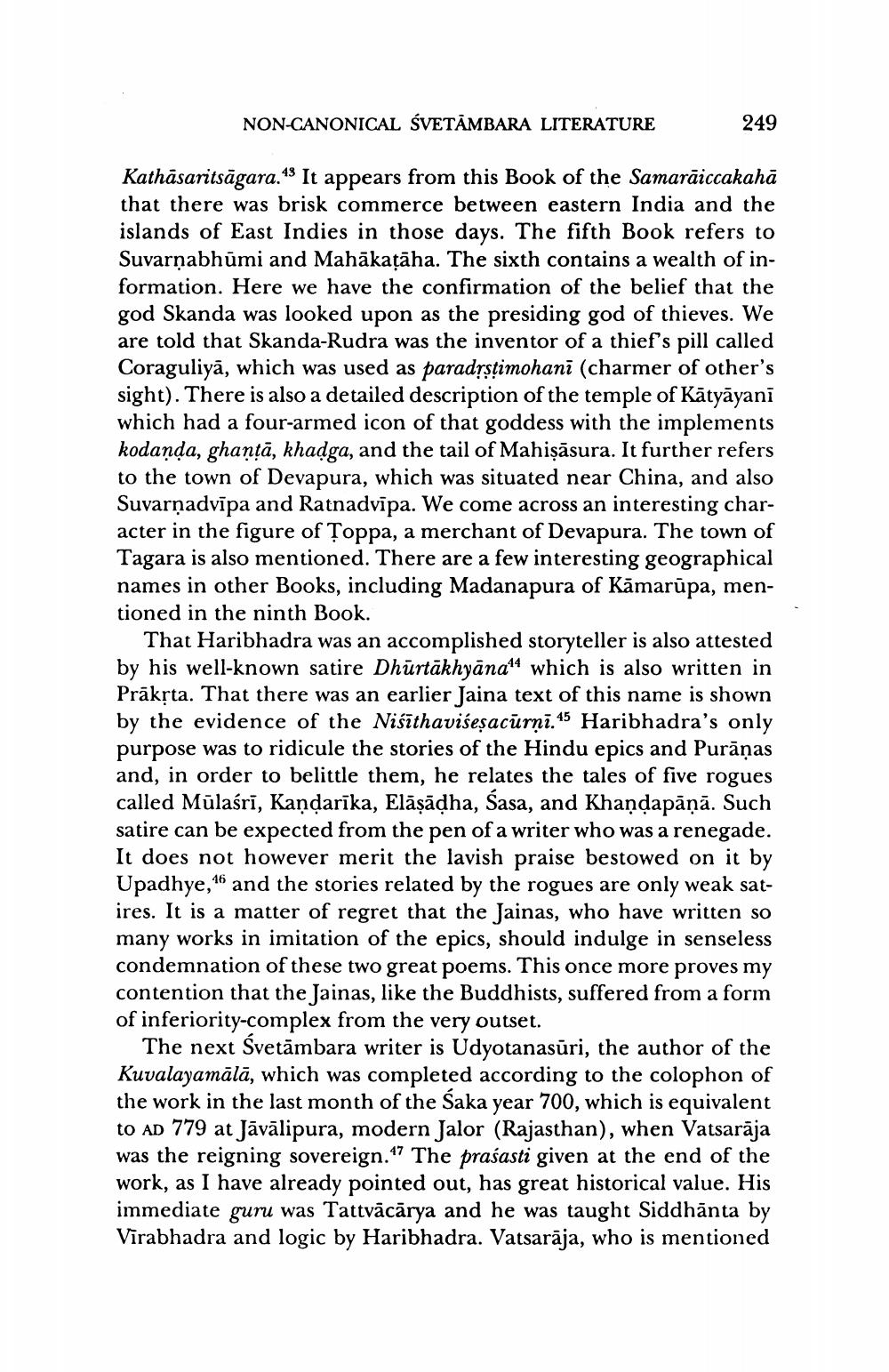________________
NON-CANONICAL ŚVETĀMBARA LITERATURE
249
Kathāsaritsāgara.43 It appears from this Book of the Samarāiccakahā that there was brisk commerce between eastern India and the islands of East Indies in those days. The fifth Book refers to Suvarnabhumi and Mahākatāha. The sixth contains a wealth of information. Here we have the confirmation of the belief that the god Skanda was looked upon as the presiding god of thieves. We are told that Skanda-Rudra was the inventor of a thief's pill called Coraguliyā, which was used as paradysțimohani (charmer of other's sight). There is also a detailed description of the temple of Kātyāyani which had a four-armed icon of that goddess with the implements kodanda, ghantā, khadga, and the tail of Mahişāsura. It further refers to the town of Devapura, which was situated near China, and also Suvarṇadvīpa and Ratnadvīpa. We come across an interesting character in the figure of Toppa, a merchant of Devapura. The town of Tagara is also mentioned. There are a few interesting geographical names in other Books, including Madanapura of Kāmarūpa, mentioned in the ninth Book.
That Haribhadra was an accomplished storyteller is also attested by his well-known satire Dhurtākhyāna44 which is also written in Prākṣta. That there was an earlier Jaina text of this name is shown by the evidence of the Nisithaviśesacurni.45 Haribhadra's only purpose was to ridicule the stories of the Hindu epics and Purānas and, in order to belittle them, he relates the tales of five rogues called Mülaśrī, Kandarīka, Elāsādha, Sasa, and Khandapāņā. Such satire can be expected from the pen of a writer who was a renegade. It does not however merit the lavish praise bestowed on it by Upadhye,14 and the stories related by the rogues are only weak satires. It is a matter of regret that the Jainas, who have written so many works in imitation of the epics, should indulge in senseless condemnation of these two great poems. This once more proves my contention that the Jainas, like the Buddhists, suffered from a form of inferiority-complex from the very outset.
The next Svetāmbara writer is Udyotanasūri, the author of the Kuvalayamālā, which was completed according to the colophon of the work in the last month of the Saka year 700, which is equivalent to AD 779 at Jāvālipura, modern Jalor (Rajasthan), when Vatsarāja was the reigning sovereign."7 The praśasti given at the end of the work, as I have already pointed out, has great historical value. His immediate guru was Tattvācārya and he was taught Siddhānta by Virabhadra and logic by Haribhadra. Vatsarāja, who is mentioned




